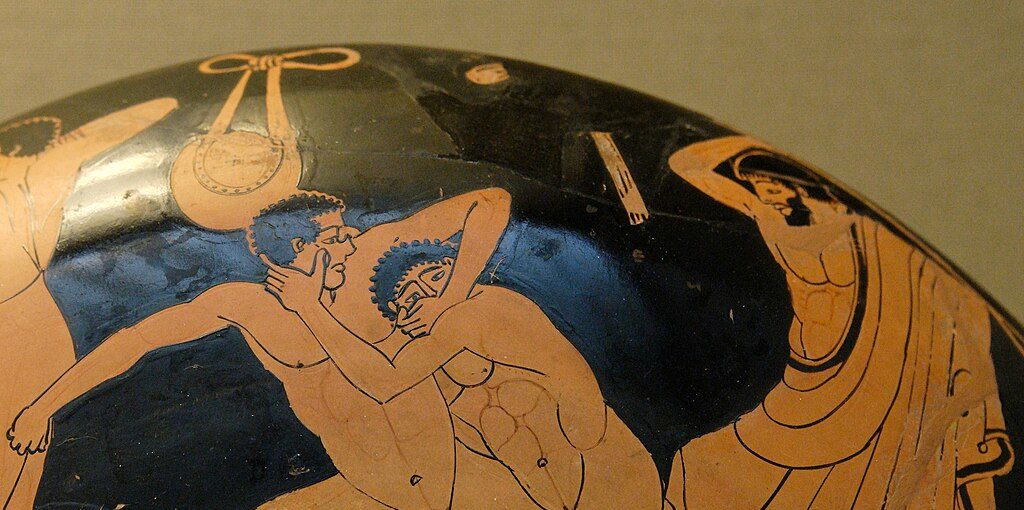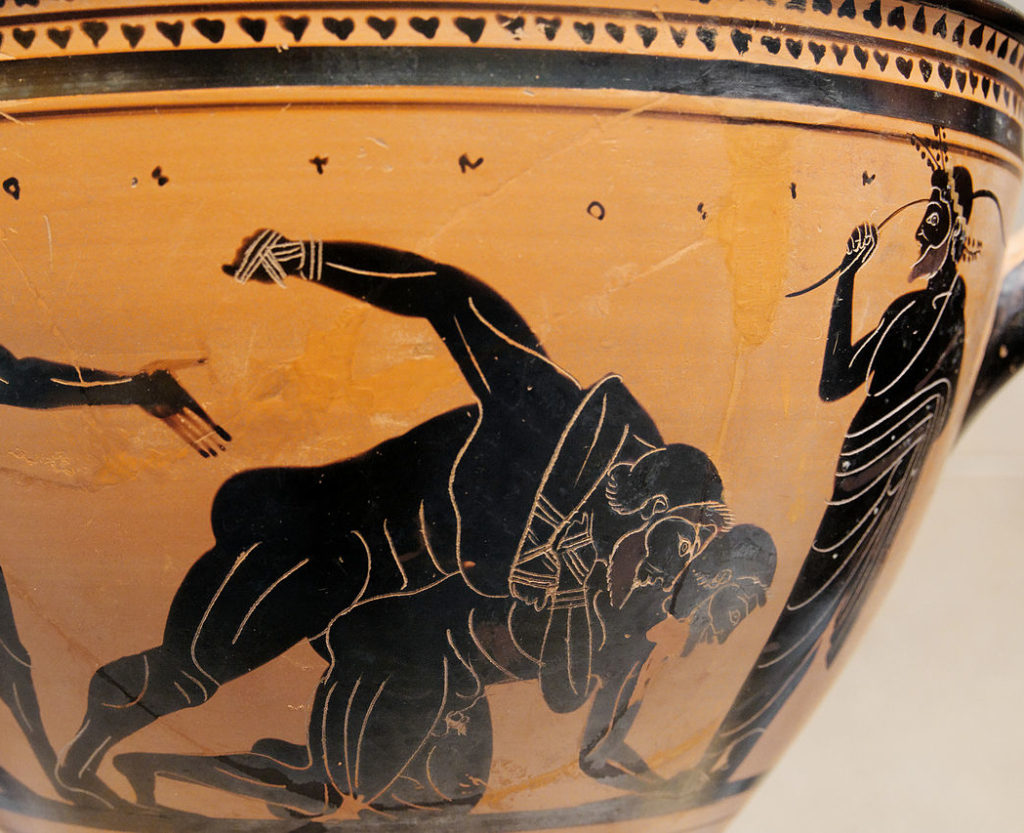
Pankration was one of ancient Greece’s most revered sports in the same way that millions of people love MMA today. It was an embodiment of the ancient Greek ideal of excellence, which was known in Greek as “arete.”
This sport combined raw strength with strategic thinking. The Greeks viewed it as the ultimate combat, requiring exceptional levels of discipline. It was a highlight of the ancient Olympic Games.
The audiences were captivated with its blend of boxing, known in Greek as “pygmachia” and wrestling, which was known as “pále.” Its introduction to the world took place in 648 BCE. This historical moment for the world of sports marked a significant evolution in martial competition, as this new sport placed its emphasis not just on physical prowess but also the mental abilities of the athletes.
The evolution of pankration
The origins of Pankration can actually be traced in Greek mythology. This suggests there is clearly a more divine element behind its techniques. Many could argue this was another reason why it was such a popular and respected sport for the Greeks.
However, it was actually the rigorous nature of the moves and minimal rules that set it apart from other forms of martial arts. The participants, known as Pankratiasts, engaged in a contest in which no holds were barred. Victory was claimed by the total submission or physical or mental incapacitation of the opponents. It was a true ode to the man’s endurance, courage, and skills.
Mastery of technique in the Pankration

The techniques of Pankration were both diverse and effective. An athlete could use any strategy—from powerful strikes to intricate ground maneuvers—to achieve the ultimate goal. Men who engaged in this sport had to master both the “Ano Pankration” and the “Kato Pankration.”
The “ano” (upper) version focused on standing combat with punches and kicks. The “kato Pankration” (lower) involved grappling and submission techniques on the ground.
The athletes put their emphasis on strategic moves that would help them transition between attacking and defensive postures. Their main goal was to exploit the slightest opening in an opponent’s defense before they attacked.
Pankration in society

Pankration was not simply a sport that was played for enjoyment. It also held a significant place in Greek military training—and for good reason. Greek armies used its practical application in warfare. One of the main reasons for this was the discipline it instilled. Pankration was considered to be essential for hoplites, the soldiers of the Greek city-states.
The legacy continues
The abolition of Pankration from the Olympic Games was ordered by the Christian Byzantine Emperor Theodosius I in 393 AD. However, this move did not diminish its influence.
The sport’s legacy persisted through the ages, as it was Pankration itself that evolved and inspired modern mixed martial arts (MMA). Today, MMA fighters use techniques that remind us of the ancient Pankratiasts.
The modern resurgence
According to estimates, MMA today is one of the fastest-growing sports in viewership across the world. It also sees great increase in the numbers of people who want to engage in it. The whole industry is valued at over $9 billion.
Of course, this wouldn’t be the case without the ancient Pankration. MMA owes much of its origins to this ancient sport. MMA today combines elements of boxing, wrestling, and kicking with minimal rules. This reminds us all of the ancient Greek competition.
Back then, the athletes of Pankration often found themselves in severe and sometimes fatal fights. This could be described as the ancient Greek version of the high-stakes MMA fights that we see today in the world of martial arts.
Ancient virtues of Pankration in modern times
Pankratiasts used to be celebrated athletes across the ancient Greek world. They represented their city-states with pride in a similar way to what modern-day athletes do when they represent their countries. Their legacy is clearly mirrored in today’s MMA fighters, as these athletes not only engage in physical combat but also challenge themselves to follow a path of excellence in character.
It is known that this ancient sport was valued not only for the brilliant spectacle that it could offer to its audiences but was also loved by the Greeks for its practical combat applications. Famously, some of these aspects of Pankration were used by Spartans in their numerous battles. The Spartans used these techniques to maintain their dominance as one of the strongest military forces of the ancient world.
Cultural shift and decline
As is the case for many ancient Greek traditions, the decline of Pankration coincided with the rise of Christianity. The new religion brought a new way of thinking, changing Roman values forever. Hence, Roman society viewed Pankration as a remnant of pagan traditions.
As the Empire adopted Christianity as its state religion, the cultural landscape changed dramatically. This was the main reason behind the disappearance of Pankration from Roman public life. However, the core values of Pankration survived the ages. Proof of this is that it eventually found new expression in modern martial arts.
Pankration today
While Pankration itself may no longer be an official sport in the modern Olympic Games, its spirit lives on in the world of MMA, as this ancient Greek sport provided a solid historical foundation for MMA. It also inspired athletes and spectators alike.
As MMA grows in popularity in today’s world, we can say it carries with it the traditions of this forgotten ancient Greek competition. The athletes of Pankration placed particular emphasis on a balanced approach to combat. They consistently attempted to combine strength with technique rather than engaging in a raw fight without purpose. This is something that we can definitely see in today’s martial arts, too.
The recent resurgence of interest in Pankration helps us reflect on the universal qualities that define the athletic ethos of all sports. Educational programs and martial arts communities worldwide can incorporate Pankration’s techniques and ideals into their curricula. This educational aspect of the modern interest in Pankration shows the importance of the ancient Greek practice of putting equal emphasis both on body and mind.
In conclusion, we can definitely say that the long story of Pankration is not a simple historical footnote in the broader story of ancient sports. It is a practice that survived through time and continues to evolve. It inspires not only those within the martial arts community but everyone else, as well. As MMA continues to grow and captivate audiences worldwide, the ancient spirit of Pankration will continue to live on.
See all the latest news from Greece and the world at Greekreporter.com. Contact our newsroom to report an update or send your story, photos and videos. Follow GR on Google News and subscribe here to our daily email!



